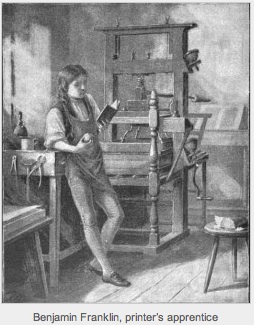The Philadelphia Federal Reserve writes: Government, foundation, and workforce leaders are displaying keen interest in apprenticeships as a way to give job seekers skills, credentials, and access to careers. This increased interest is also part of the greater attention to workforce development strategies that engage employers.Apprenticeships have a long history with roots in ancient times. The Code of Hammurabi of Babylon, which dates back to the 18th century bce, required artisans to teach their crafts to the next generation. By the 13th century, a type of apprenticeship emerged in Western Europe in the form of craft guilds.[1] In the colonial U.S., now-famous apprentices included George Washington (surveyor), Benjamin Franklin (printer), and Paul Revere (silversmith).
RAs, authorized under 78-year-old federal legislation, are getting more attention in recognition of the critical importance of engaging private-sector employers in addressing the workforce needs of unemployed and underemployed people. RAs, with a combination of structured OTJ training and related training and instruction, hold the promise of industry-recognized credentials and career access. RAs have been used primarily in the skilled trades and construction, but recent DOL grants are intended to catalyze their use by new populations in high-growth industries with new program models.
As private-sector employers weigh the costs and benefits of apprenticeships, intermediaries can assist employers to design programs, recruit participants, and register RA programs. The intermediaries range from state programs such as Apprenticeship Carolina, nonprofits such as Vermont Healthcare and Information Technology Education Center (HITEC), and joint labor – management programs.
The declarations of intent signed this summer between the U.S. Departments of Commerce, Education, and Labor and their counterparts in Germany and Switzerland reflect a growing desire to learn from countries where apprenticeships are successfully embedded in educational and employment systems. The inherent challenge will be to apply and implement successful practices in the U.S. despite differences in educational systems and employment practices. Apprenticeship

